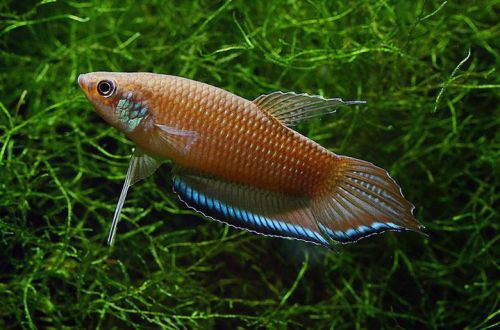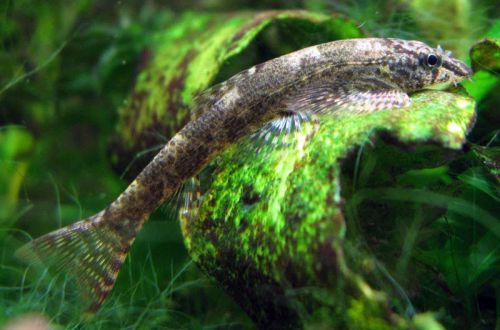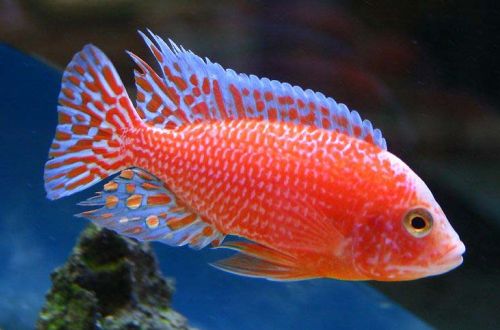
betta lagsik
Vigorous Betta or Vigorous Cockerel, scientific name Betta enisae, belongs to the Osphronemidae family. The Russian-language name is an adaptive translation from Latin. At the same time, one should not expect special mobility from this fish; in most cases, it swims measuredly around the aquarium. However, if two males are placed together, the calm will be disturbed. Not recommended for novice aquarists if they will be engaged in the maintenance of the aquarium on their own due to the peculiarities of the hydrochemical composition of the water.

Kaundan
Habitat
It comes from Southeast Asia from the Indonesian part of the island of Borneo, West Kalimantan region. Inhabits the Kapuas River basin, where it occurs mainly in swamps and associated streams, located among tropical rainforest. Reservoirs are shallow, poorly lit by the sun due to the dense crown of trees, their bottom is covered with a layer of fallen plant material (leaves, twigs, etc.), during the decomposition of which humic acids and other substances are released, giving the water a rich brown tint.
Mubo nga impormasyon:
- Ang gidaghanon sa aquarium - gikan sa 40 ka litro.
- Temperatura – 21-24°C
- Bili pH - 5.5-7.0
- Katig-a sa tubig – 1–5 dGH
- Type sa substrate - bisan unsa
- Paglamdag - gipaubos
- Brackish nga tubig - dili
- Ang paglihok sa tubig - huyang o wala
- Ang gidak-on sa isda mao ang 5-6 cm.
- Pagkaon - bisan unsang pagkaon
- Temperament – malinawon
- Kontento – nag-inusara, nagtinagurha o sa grupo
Description
Adults reach a length of 5–6 cm. The fish have a large body and large fins with elongated tips. Males are reddish in color with a black-turquoise lower edge at the anal fin and tail. Females are light gray with rows of horizontal dark stripes.
Food
In nature, it feeds on small aquatic insects and zooplankton. In an artificial environment, they successfully adapt to nutrition with alternative products. For example, the daily diet may consist of dry food combined with live or frozen bloodworms, brine shrimp and daphnia.
Pagmentinar ug pag-atiman, kahikayan sa aquarium
The optimal size of the aquarium for one pair starts from 40 liters. Often in pet stores and breeders, fish are in half-empty tanks, without any formalization. For some novice aquarists, this sometimes suggests that Bettas are quite unpretentious and able to adapt to various conditions. In fact, such an environment is not ideal and should be regarded as temporary. In a long-term home aquarium, it is important to recreate an environment that resembles a natural biotope. Namely: a subdued level of lighting, dark soil, the presence of numerous shelters in the form of snags or decorative items, areas with dense thickets of shade-loving plants. Sheet litter will be a great addition. The leaves of some trees are not only a natural element of decoration, but also give the water a composition similar to that in which fish live in nature, due to the release of tannins during decomposition.
Another important aspect of keeping Betta Vigorous is the maintenance of biological balance. The main hydrochemical indicators should be within the acceptable range of values, and the maximum concentrations of nitrogen cycle products (ammonia, nitrites, nitrates) should not be exceeded. Usually, a filtration system and regular aquarium maintenance (replacement of some water with fresh water, removal of waste) are considered sufficient to ensure that the water quality is at the proper level.
Kinaiya ug Pagkaangay
They belong to the group of fighting fish, however, they do not have the temperament that one would expect. Intraspecific relationships are built on competition between males, who will compete with each other for a dominant position, but it does not come to violent skirmishes. After a demonstration of strength, the weaker individual prefers to retreat. They are set up quite peacefully in relation to other species, get along well with fish of a comparable size.
Pagpasanay / pagpasanay
During breeding, the fish do not lay eggs on the ground or among plants and do not form a clutch. In the course of evolution in an unstable environment, when the water level can change greatly, a mechanism for protecting offspring has appeared that guarantees the survival of most eggs. An energetic cockerel bears fertilized eggs in his mouth, and the male is doing this. The incubation period lasts 9-12 days, after which fully formed fry appear. Parents do not pose a danger to their juveniles, but other fish will not mind eating them, therefore, for the safety of their offspring, it is advisable to move them to a separate tank with identical water conditions.
Mga sakit sa isda
Ang hinungdan sa kadaghanan sa mga sakit mao ang dili angay nga mga kondisyon sa detensyon. Ang usa ka lig-on nga puy-anan mao ang yawe sa malampuson nga pagtipig. Kung adunay mga sintomas sa sakit, una sa tanan, ang kalidad sa tubig kinahanglan nga susihon ug, kung makit-an ang mga pagtipas, kinahanglan nga himuon ang mga lakang aron matul-id ang kahimtang. Kung ang mga simtomas magpadayon o mograbe pa, kinahanglan ang medikal nga pagtambal. Basaha ang dugang bahin sa mga sintomas ug pagtambal sa seksyon sa Mga Sakit sa Isda sa Aquarium.





